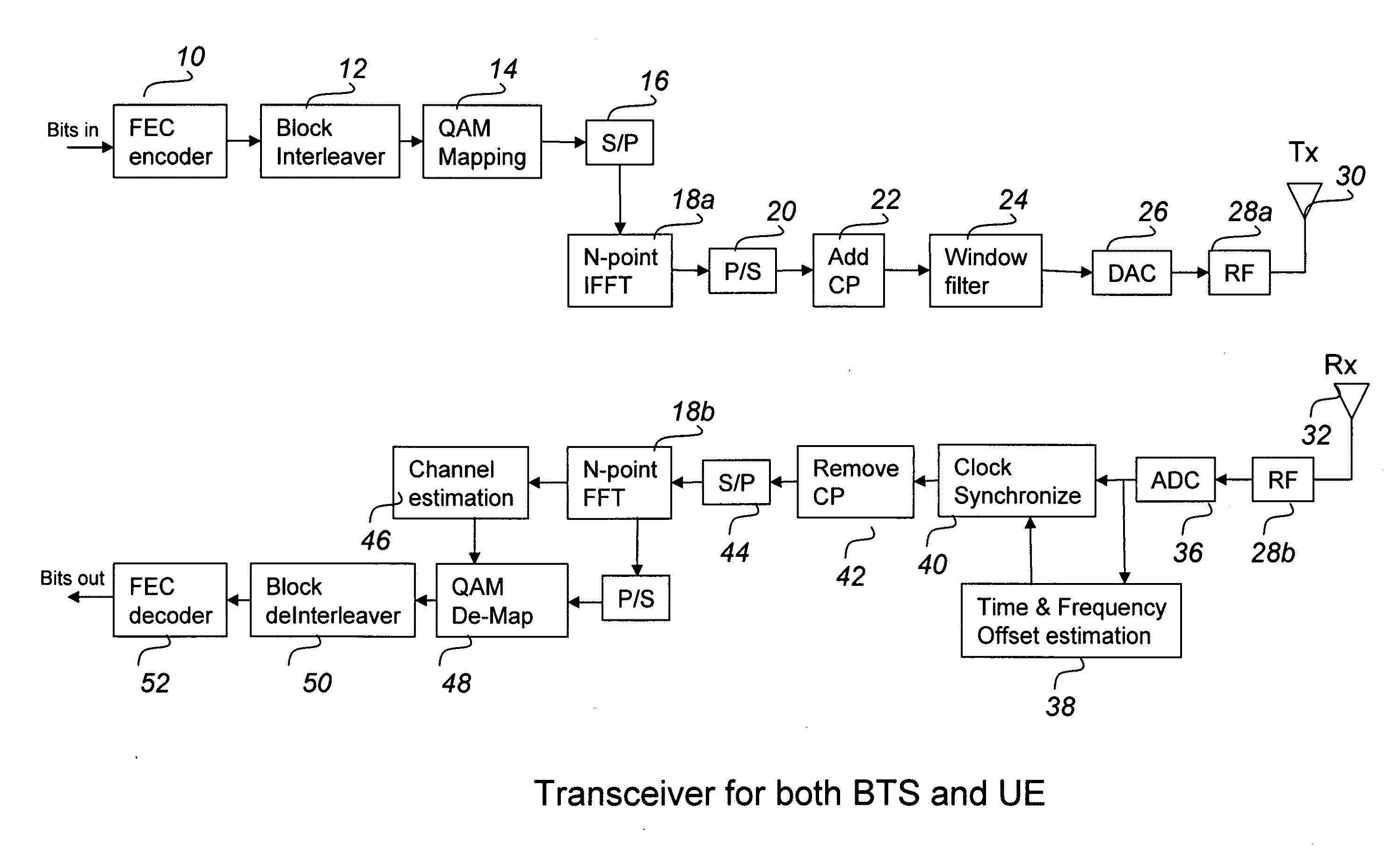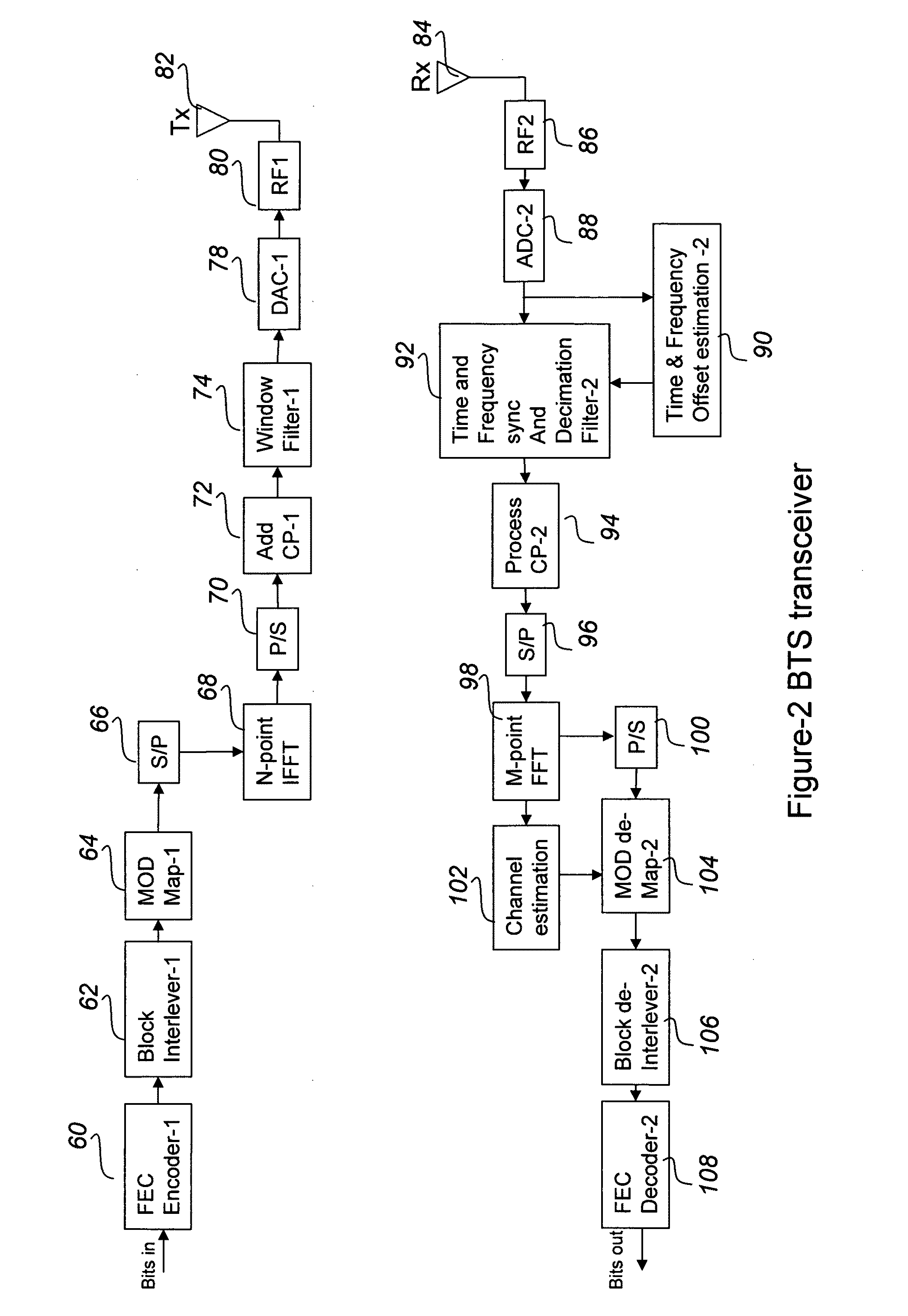Systems and methods with non symmetric OFDM modulation
a communication system and non-symmetric technology, applied in the field of communication systems with non-symmetric ofdm/ofdma modulation, can solve the problems of symmetric designed systems, inconvenient and inefficient downlink and uplink conventional symmetric design systems, and inconvenient and inconvenient symmetric design systems, etc., to achieve the effect of reducing bandwidth, reducing qos, and wasting bandwidth
- Summary
- Abstract
- Description
- Claims
- Application Information
AI Technical Summary
Benefits of technology
Problems solved by technology
Method used
Image
Examples
Embodiment Construction
[0028]The conventional OFDM / OFDMA design is symmetric in the sense that two communication ends use the same bandwidth and same FFT size and the same type of modulations and coding schemes. The well known example is WiFi OFDM where AP and UE share 20 MHz contiguous spectrum timely and employ 64-point FFT and QAM (Quadrature Amplitude Modulation) modulation and convolution coding. The existing wireless communication standards have allocated channel bandwidth equally to downlink and uplink maybe for voice centric reasons. Other examples with symmetry designs include GSM (200 kHz contiguous spectrum for uplink and 200 kHz contiguous spectrum for downlink and both use GMSK modulation), CDMA (code division multiplex access, uses contiguous 1.25 MHz channel for uplink and contiguous 1.25 MHz channel for downlink and both use code division multiplexing), UMTS (universal mobile terrestrial system, uses contiguous 5 MHz spectrum for uplink and contiguous 5 MHz spectrum downlink and both use c...
PUM
 Login to View More
Login to View More Abstract
Description
Claims
Application Information
 Login to View More
Login to View More - R&D
- Intellectual Property
- Life Sciences
- Materials
- Tech Scout
- Unparalleled Data Quality
- Higher Quality Content
- 60% Fewer Hallucinations
Browse by: Latest US Patents, China's latest patents, Technical Efficacy Thesaurus, Application Domain, Technology Topic, Popular Technical Reports.
© 2025 PatSnap. All rights reserved.Legal|Privacy policy|Modern Slavery Act Transparency Statement|Sitemap|About US| Contact US: help@patsnap.com



